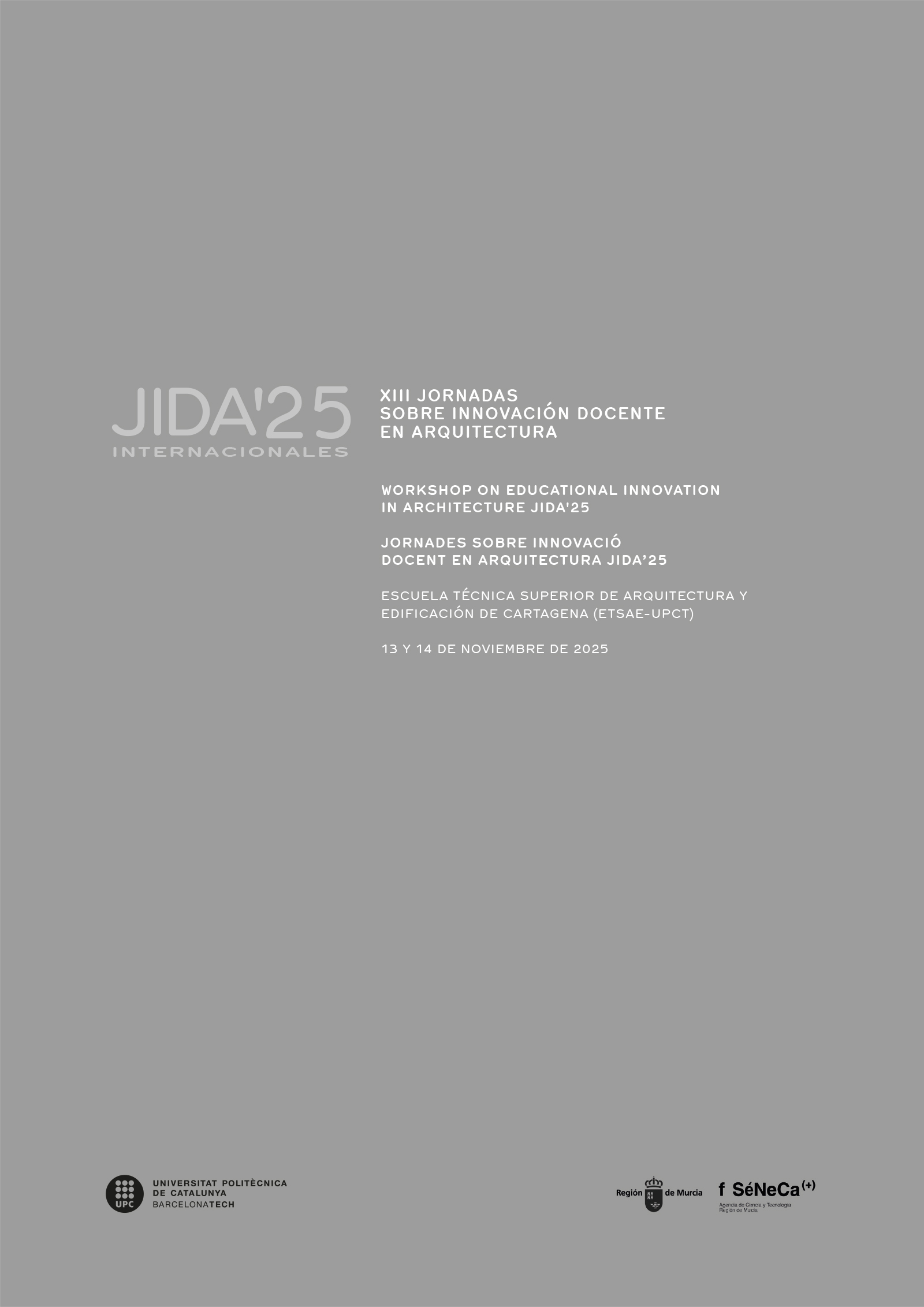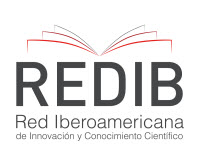Perceived Space: Sensory Explorations through Dynamic Envelopes
DOI:
https://doi.org/10.5821/jida.2025.13628Keywords:
embodiment in architecture, spatial phenomenology, spatial perception, sensory learning, active learningAbstract
The Perceived Space experience is conceived as an active methodology for learning architectural space through bodily experimentation and systematic recording of perception. Conducted with first-year students, it involved constructing and transforming ephemeral cane-and-fabric envelopes to explore variables such as scale, enclosure, and intimacy in dynamic configurations. Based on a phenomenological understanding of space, which recognizes the body and senses as mediators of architectural experience, the project sought to link these variables with sensory perceptions. This process is grounded in the Research by Design approach, consolidating the experience as both a pedagogical tool and a resource for design reflection.
References
Agnew, Kenneth. 1993. «The Spitfire: Legend or History? An argument for a new research culture in design». Journal of Design History 6 (2): 121-30.
Böhme, Gernot. 1993. «Atmosphere as the Fundamental Concept of a New Aesthetics». Thesis Eleven 36 (1): 113-26. https://doi.org/10.1177/072551369303600107.
Canepa, Elisabetta, y Bob Condia. 2022. Generators of Architectural Atmosphere. New Prairie Press. https://doi.org/10.5281/zenodo.7191265.
Carbajal-Ballell, Rodrigo, y Silvana Rodrigues-De-Oliveira. 2016. «Inmersión en el proyecto arquitectónico: ideación, debate y construcción». En JIDA, 70-84. Universitat Politècnica de València. https://doi.org/10.5821/jida.2016.5100.
Chatterjee, Anjan, y Oshin Vartanian. 2014. «Neuroaesthetics». Trends in Cognitive Sciences 18 (7): 370-75. https://doi.org/10.1016/j.tics.2014.03.003.
Frayling, Christopher. 1993. «Research in art and design». Royal College of Art Research Papers 1 (1).
García-Escudero, Daniel, y Berta Bardí-Milà. 2024. «Research by Design: Reflexiones en torno a la investigación arquitectónica». Palimpsesto 1 (27): 2. https://doi.org/10.5821/palimpsesto.27.13424.
Hatıpoğlu, Serkan Can, Melih Kamaoğlu, Gamze Şensoy, y Mehmet İnceoğlu. 2023. «Body, dance and abstraction for spatial and structural comprehension in the first year of design education». International Journal of Technology and Design Education 33 (1).
Holl, Steven. 2011. Cuestiones de percepción: Fenomenología de la arquitectura. Gustavo Gili SL.
Jelić, Andrea, Gaetano Tieri, Federico De Matteis, Fabio Babiloni, y Giovanni Vecchiato. 2016. «The Enactive Approach to Architectural Experience: A Neurophysiological Perspective on Embodiment, Motivation, and Affordances.» Frontiers in Psychology 7: 481. https://doi.org/10.3389/fpsyg.2016.00481.
Malnar, Joy Monice, y Frank Vodvarka. 2004. Sensory Design. Minneapolis: University of Minnesota Press.
Merleau-Ponty, Maurice. 1993. Fenomenología de la percepción. Barcelona: Editorial Planera-De Agostini, S.A.
Pallasmaa, Juhani. 2022. Los ojos de la piel. Barcelona: Gustavo Gili.
Pérez Delacruz, Elisa, Patricio Ortega Torres, Alejandra Paz Galdames Riquelme, y Valeria Silva Inostroza. 2023. «Ritmos Espaciales: aprender jugando». En JIDA, 699-713. Universitat Politècnica de Catalunya. Iniciativa Digital Politècnica. https://doi.org/10.5821/jida.2023.12299.
Ramos Jular, Jorge, y Valentina Rizzi. 2024. «El espacio del cuerpo / el cuerpo del espacio: experiencias físicas y digitales y viceversa». En JIDA. Universitat Politècnica de Catalunya. Iniciativa Digital Politècnica. https://doi.org/10.5821/jida.2024.13244.
Zumthor, Peter. 2007. Atmósferas. Barcelona: Gustavo Gili.






















